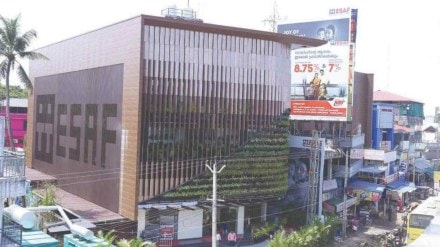Thrissur-headquartered ESAF Small Finance Bank (SFB) is expecting its capital adequacy ratio (CRAR) to rise by 3.5% to over 24% in December-end after the lender completed its Rs 463 crore initial public offering (IPO) earlier this month, MD & CEO K. Paul Thomas told FE. As of September end, the SFB’s CRAR stood at 20.57%.
“We did not expect such an overwhelming response to the issue, we only realised it after first day of subscription,” Thomas said on the 73x subscription the IPO received.
SFB’s shares listed at an 18% premium over the IPO price on bourses on November 10. The share debuted at Rs 71 on the NSE and Rs 71.90 on the BSE, as compared to the issue price of Rs 60. On Friday, ESAF SFB’s shares ended trading at Rs 69 piece.
ESAF SFB on Saturday also reported its September-end net profit at Rs 140.12 crore, higher over two-folds from Rs 57.58 crore in Q2FY23. However, asset quality deteriorated on a sequential basis, with gross and net non-performing asset ratio (GNPA, NNPA) rising to 2.64% and 1.19% as of September 30 from 1.65% and 0.81% as of June 30, respectively.
Thomas said the NPAs rose due to seasonal issues. He said the SFB has a large presence in coastal belt, which was affected during July-August and a ban was implemented on fishing activities. “While this is a seasonal impact, we will manage to bring down GNPAs to below 2% and NNPA below 1% (by March end),” he said. Credit cost, which stood at 3.16% during Q2, will likely moderate to 2.5%-3% by March end, he added.
Further, as of September end, ESAF total assets under management (AUM) stood at Rs 17,490 crore, up 37% on a year-on-year (YoY) basis and 2% quarter-on-quarter (QoQ). About 75% of the SFB’s AUM consists of microfinance (MFI) loans, whereas retail assets like gold, agriculture, mortgage, mobility, corporate and NBFC loans account for rest. The lender is targeting to grow its overall AUM by 30%-35% in H2FY24, Thomas said.
ESAF SFB has a branch network of over 700 branches and will add 50 more branches during current fiscal, Thomas added, the SFB also has a large network of 760 customer service centres (CSCs) operated by business correspondents (BC), which it plans to increase by another 100 more in FY24.
Despite analysts’ concern on over reliance on BC network for business growth, Thomas said the SFB will continue to use BC channel for its MFI business. “As other businesses grow, branch sourcing will increase and dependency on BCs will come down. We have found that though BCs as a banking channel were introduced in 2005, it has got more momentum in last couple of years,” he said.
As the share of secured assets rises and with an expected rise in borrowing cost, ESAF SFB is also expecting its net interest margin (NIM)—a key indicator measure lenders’ profitability—to moderate to 10% going ahead from 11.9% during Q2, Thomas said.
In terms of digital infrastructure, the lender is in the process of revamping its mobile application which will provide better user experience and also introduce a digital KYC feature on the revamped app. The lender will consider offering e-rupee or central bank digital currency (CBDC) product as it matures, Thomas said. In addition, the SFB is also conducting feasibility study in introducing RuPay credit cards and UPI Lite feature, he added.
